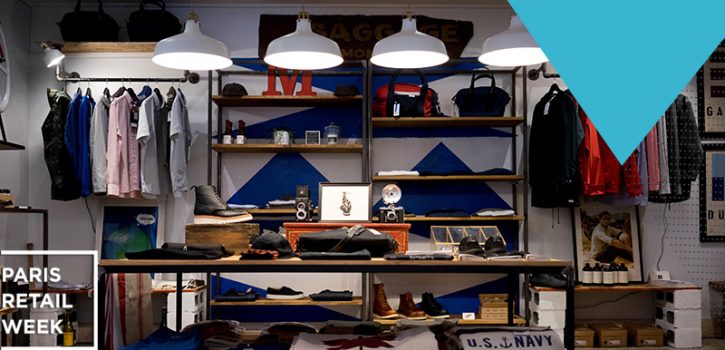As we learnt yesterday of the demise of retail giant Toys”R”Us, which was unable to go down the digital route, there’s no doubt that footfall in physical shops has been declining for several years, while online sales are rising exponentially. Retailers are finding themselves facing a challenge of scale: how to strengthen their online presence and retain physical stores as sources of interest for consumers?
The Shopper Observer Havas Paris 2017 (the observatory of consumer behaviour and retail innovation) was at Paris Retail Week 2017 to reveal the new trends observed in retail in worldwide that will reinvent the market and put ‘the human’ and ‘the experience’ back at the heart of the customer journey. Let’s take a look the first four trends:
1. The new “convenience”: comfort and extreme fluidity
Today, the objective of physical stores is to reduce areas of friction at the time of purchase: the vast majority of people would like superstores to provide a better response to their buying habits.
The two pillars of these areas of change concern the major sticking points: payment and delivery.
Facilitating payment for consumers
Most people are increasingly unhappy to queue in stores. That’s why more and more stores are implementing innovative payment solutions to reduce waiting times. Tomorrow, everyone should be able to pay by mobile, by facial recognition or even by vehicle number plate. Oney, Auchan’s banking subsidiary, recently got together with PSA to work on a prototype connected car that integrates a contactless payment solution via the vehicle’s number plate.
Facilitating the delivery of purchases
Many innovations also make it possible to considerably optimise the delivery of products: Just Eat was the first company to deliver meals via a robot, Cassie is working with Agility Robotics on a robot capable of climbing stairs to make deliveries… Elsewhere, collection solutions are springing up like mushrooms. Delivery services are now part of everyday life: in stations and shopping centres, there are now lockers where you can collect your parcels, and in NYC there are even rooms in the hallways of buildings with fridges to store deliveries of fresh produce.
2. From the website to the delivery service: how millennials are setting the new standards in e-commerce
And what if social commerce were to become the new standard in online commerce? That’s what Shopper Observer Havas Paris 2017 seems to show. These days, mobile is a major purchasing channel, the biggest shop in the world; nearly half of online trade is actually done via mobile.
The social networks are coming up with more and more innovations to encourage direct purchases through their platforms. Instagram and shoppable tags, Facebook and its geolocalised marketplaces, Pinterest and “buy it” buttons, Snapchat and shoppable ads… which is not surprising when you know that a sizable number of 18-35 year-olds would like to be able to buy directly on the social networks.
3. From the cognitive to the emotional: how brands can anticipate the needs of their customers
The CES 2017 revealed a new and very strong trend in retail: the use of the voice. With voice assistants like Alexa and Google Home, brands can detect and understand consumers’ emotions.
To do this, GAFA are working with innovative startups: Apple recently acquired Emotient, which uses artificial intelligence to analyse faces and detect what the speaker is feeling.
Many advertisers have started testing emotional commerce: for example, Bentley can offer you the perfect car that matches your personality, depending on your reaction to images, sounds and videos. Loewe is working on shops equipped with emotion detectors that use facial expressions and posture to determine whether the products and the way they are displayed are liked by customers, and then pass on the information automatically to sellers. Meanwhile in the animal kingdom, Bark&Co has tested a connected collar that detects the pet’s emotions so they can choose their own products in the shop…
4. From the offering to the employees: the best ambassadors for your brand
2/3 of consumers think that sales assistants in stores have little interest in what they are selling. However, of those people who do go into stores, the great majority of them would like to deal with passionate employees who are true standard bearers for their company! Hyper-digitalisation has brought with it a paradoxical consequence: consumers want the employees of brands to come back to the centre of their shopping experience. The passion of staff should be a lever for consumer engagement
The success of the American company Wegmans is an excellent illustration of this trend: by employing only people who are passionate about what they are selling (organic, local, fresh, and at attractive prices), the brand has succeeded in creating a solid community within its teams. Wegmans even refuses to open new points of sale if all the staff haven’t been recruited carefully enough and thoroughly trained in the products. The results? Extremely high consumer engagement and eight consecutive years in the top 10 American companies that are good places to work (in 2017, Wegmans reached second place… just behind Google).
These four trends show the speed at which retail is changing since the advent of digital. In our next blog post, find the next three trends to follow!
Do you want to develop your sales internationally? Check out our guide created in partnership with Akeneo:







